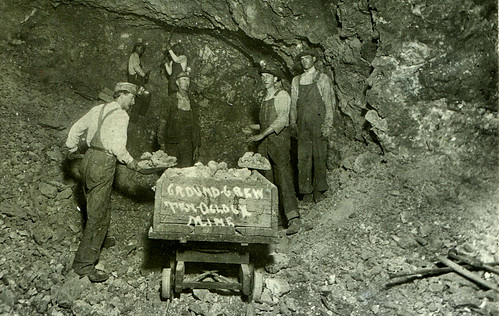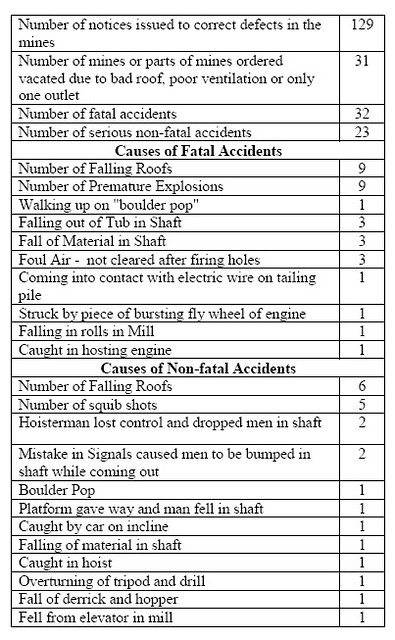From the beginning, lead and zinc mining in the Joplin district was a dangerous means to make a living, and if lucky, a fortune, too. The year 1910 was considered a good one, respectively, when compared to 1909 when 51 miners lost their lives. In 1910, in contrast, only 32 miners were killed in the pursuit of the valuable ore. Every year, mine inspectors from the state toured the mines which surrounded Joplin to ensure compliance with mining laws and to note deaths and the causes behind them. In 1910, two inspectors toured 551 mines and 65 accidents. Here are the results and a snapshot of mining in Joplin in 1910.
In summary, the most dangerous element in a mine came from above. Of the combined deaths and serious injuries, falling mine roofs accounted for 27% of the victims. The next deadliest was the more obvious danger of explosives in the form of premature explosions, squib shot (involved in the dynamiting process), and to a degree, the foul air which was caused by failing to blow out the air in a mine following an explosion. Sadly, even entering and exiting a mine bore a certain amount of lethal danger, as our previous post on the unfortunate Number 52 noted.
Source: Joplin News Herald


